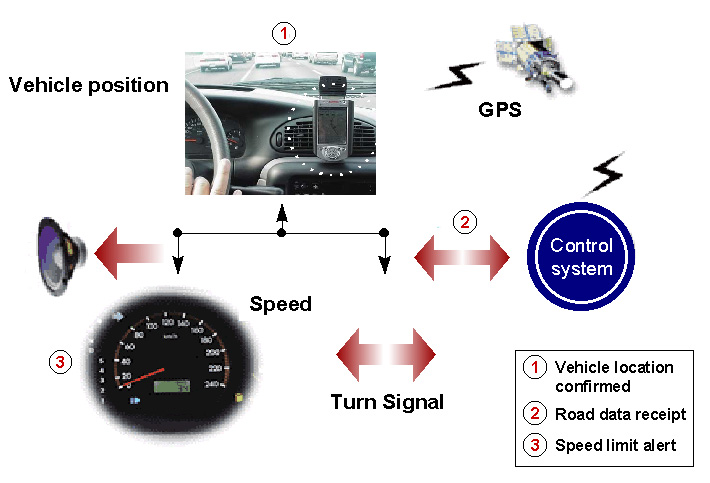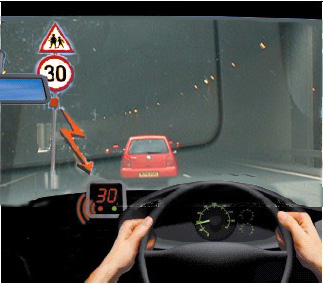
| Previous | Home | Next |
Contents
Intelligent Speed Adaptation
Successful as our toll charging scheme appeared we were interested in examining an alternative to this punitive, some would say draconian, approach to traffic management. Surely charging people off the roads is not the only solution we thought. We wondered what other intelligent transportation systems (ITS) could contribute. Could, for example, an in-car ITS possibly be as effective as toll charging in reducing pollution or increasing travelling speed and fuel efficiency? Furthermore, as previously mentioned in the Glasgow section of the website, the Strathclyde region has a high level of road traffic accidents, we found no evidence that toll charging could make a significant impact on this, so what could? It was for these reasons that we decided to investigate intelligent speed adaptation (ISA) technology.
WHAT IS ISA TECHNOLOGY?
ISA technology, simply put, advises motorists of permissible road speeds and, if necessary, acts as a vehicle speed limiter. ISA systems are a combination of several existing technologies being used in a new way. There are two main approaches to ISA implication:

Figure 1 GPS ISA system

Figure 2 Roadside transponder ISA system
NO MORE EXCUSES!
In both approaches the speed limit information can then be transmitted to the driver in a number of ways such as; warning displays and sounds - informational signals or vibrating or “stiffening” of the accelerator pedal - supportive signals. In the case of the stiffening of the accelerator what actually happens is the resistance provided by the accelerator pedal to the driver’s foot is greatly increased once the speed limit is passed (although this resistance can be overcome should an impending emergency require a burst of speed).
RESEARCH
Research work and trials with ISA are proceeding or have recently concluded in a number of European countries, including Denmark, the Netherlands, Sweden and the UK. Between 1999 and 2002 the Swedish Road Administration (SNRA) conducted ISA trials using 5,000 test vehicles distributed amongst four Swedish municipalities, most of them with a purely advisory system. Once the results of the trials had been evaluated, the SNRA proclaimed that if everybody had this type of equipment, the number of road traffic injuries could be reduced by 20-30%. They were also, unexpectedly, prepared to boast that travel times were unchanged and, in some cases a marginal improvement was even found, despite the lower maximum speed enforced - this is explained by fewer breaker situations and stops when ISA is being used.
© 2004 All rights reserved. Copyright of Derek Weir, Leanne McMillan, Roy MacLean, Hee Dong Oh & Ayman Elsadig
| Previous | Home | Next |